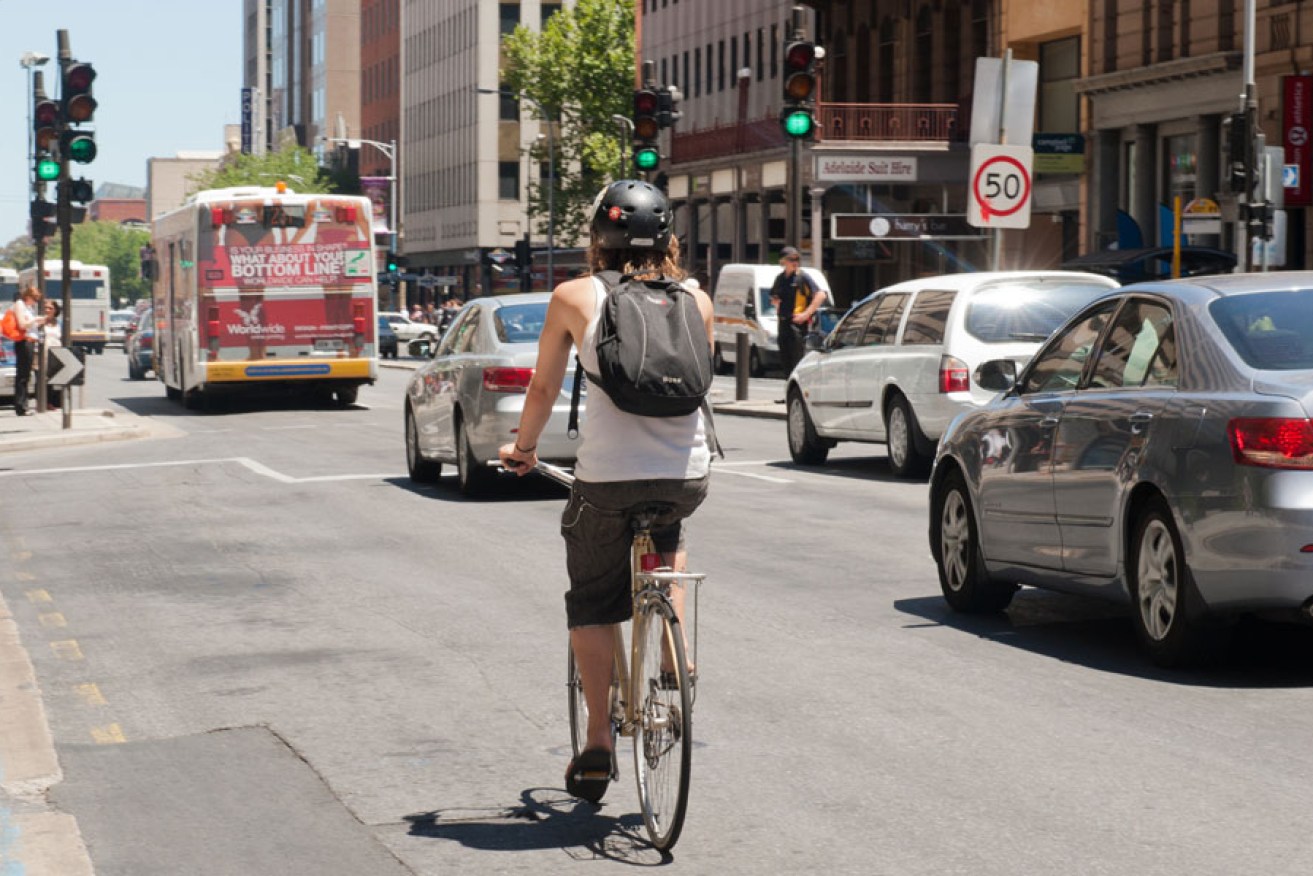Council summit seeks “solution” to cycling fracas
State Government, local councils and interest groups will next week gather for a forum that looms as a showdown on the Weatherill administration’s new bike laws, amid a spate of calls to backpedal on allowing cyclists to ride on footpaths.

Councils have called a meeting to discuss cycling on footpaths. Photo: Nat Rogers/InDaily
The roundtable, to be held on Friday week and hosted by the Local Government Association, aims to “improve safety around cycling on footpaths” and try and garner broad agreement on “potential solutions that are worthy of investigation”.
The provision to allow cyclists to ride on footpaths was introduced late last year as part of a suite of changes that also included the “one metre rule”, whereby cyclists on the road had to be kept at a safe distance by passing motorists.
LGA CEO Matt Pinnegar told InDaily the debate over cycling on footpaths – which has recently spawned councillors’ calls to ban bikes on certain thoroughfares and was last month blamed for injuries to two pedestrians in separate incidents – was not just an issue for councils, but “an issue in society”.
“Councils have no powers to set speed limits on footpaths, and no power to police cyclists on footpaths,” he said.
“We’re concerned cyclists have been vilified, and we’re concerned about other users expressing their concerns very clearly to councillors… we want to make sure that everybody’s on the same page with who has what responsibilities in what jurisdiction when it comes to regulating cycling or cyclists.”
Transport Minister Stephen Mullighan has been invited to attend the event, along with Opposition spokesman David Pisoni and Upper House crossbenchers John Darley and Dennis Hood.
SA Police, Bike SA, the Royal Society for the Blind and the RAA are also on the invitation list, along with council representatives, with Adelaide Lord Mayor Martin Haese saying in an LGA statement he was “keen to contribute to a constructive conversation around this important issue”.
“By getting these associations together, at least we can have a consistent position on the current changes,” Pinnegar said.
“In the first instance, we’re just after clarity… we don‘t want to move into the regulation of cyclists’ space, but at the same time we don’t want to be blamed for any instances [where pedestrians get hit].”
A report compiled with the assistance of the transport department last November found councils were not liable for accidents as a result of the new laws, but could expect to have to spend more to maintain footpaths for cyclists as well as pedestrians.
“Councils should review and, where necessary, revise road and footpath management plans to take into account the potential for increased bicycle traffic,” the report stated.
It also found that individual councils could ban bicycles on certain footpaths and “have general approval to install traffic control devices including the ‘No bicycles’ pavement marking”.
However, only the Adelaide City Council had the statutory power to regulate bikes in pedestrian areas through existing by-laws.
But Pinnegar said subsequent commentary had suggested it was “up to councils to introduce new regulatory measures to improve safety for cyclists and pedestrians on footpaths, while our advice has been that local government does not have the legislative authority to make these changes”.
“We’re not liable, and police are the only group that have the power to charge cyclists for speeding, should they be going at a speed faster than the road adjacent to the footpath,” Pinnegar said.
“However, instead of playing the blame game, the LGA would rather work collaboratively with the Government, opposition and peak bodies to discuss and develop practical safe cycling solutions that will benefit all South Australians.
“We’re taking the initiative because if we don’t do something like get these associations in a room together, the next time there’s an issue between a cyclist and a pedestrian we’ll all be out in the media singing the same sad tune.”
He said calls from individual councillirs for specific ‘no-ride’ areas were “not positions that are endorsed by the LGA”.
“But they’re out there as the result of concerned communities expressing their concerns to councils… and it’s natural for them to be trying to find a solution,” he said.




